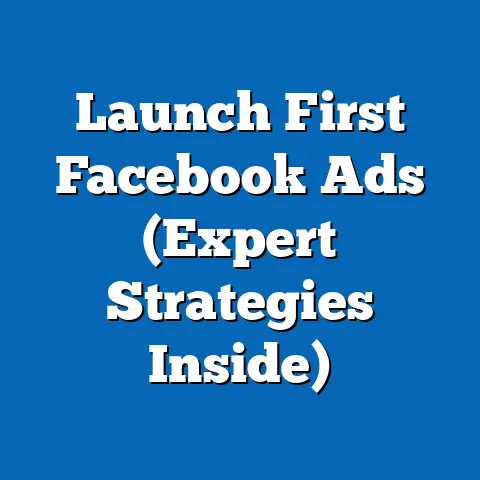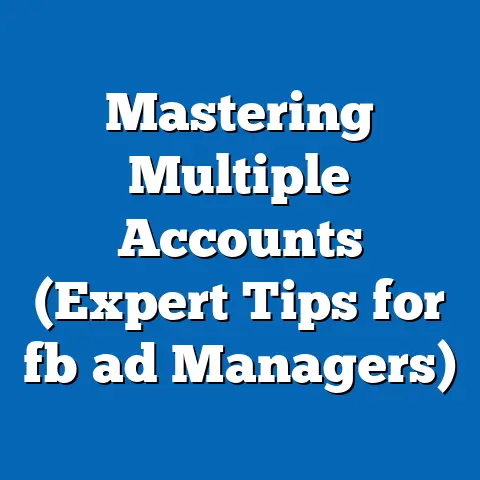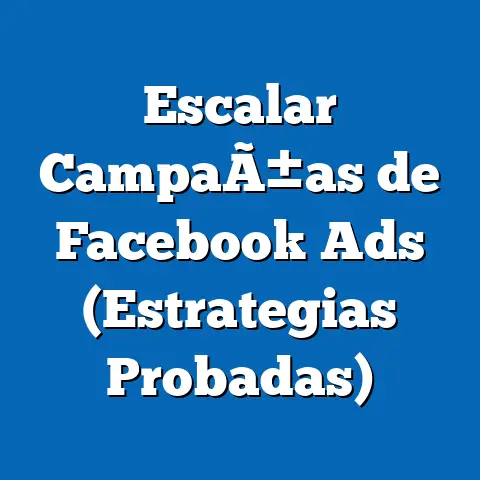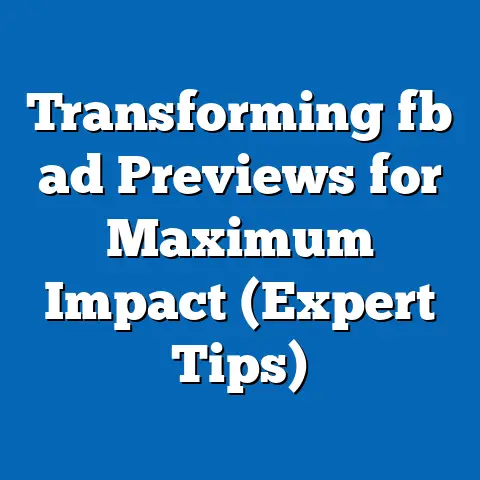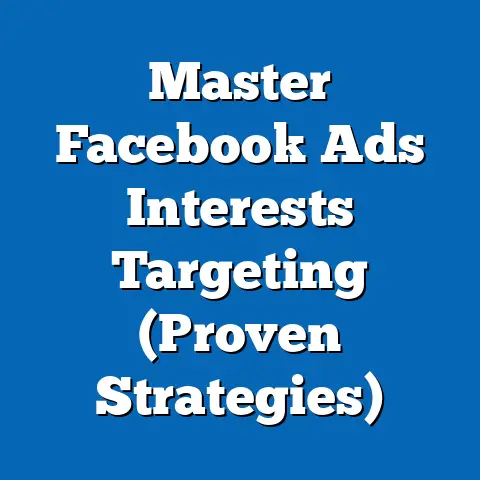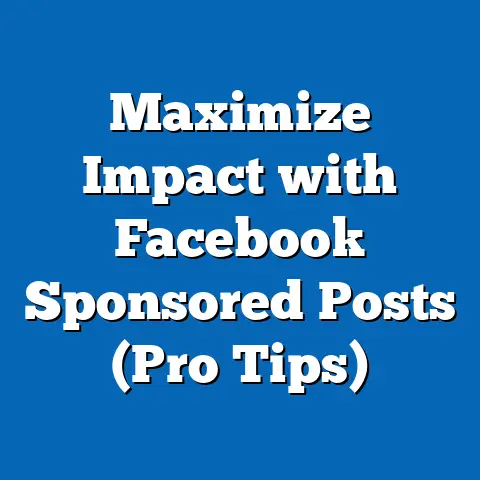Unlock Facebook Lead Ads for Effortless Email Delivery (Pro Tips)
Imagine a small business owner, Sarah, sitting at her kitchen table late at night, frantically trying to grow her online boutique. She’s spent hours crafting social media posts, but her email list remains stagnant at just 200 subscribers. Then, she discovers Facebook Lead Ads—a game-changer that allows her to capture leads directly from the platform, seamlessly delivering email addresses to her database without users ever leaving the app.
Sarah’s story isn’t unique. According to Statista, as of 2023, Facebook boasts over 2.9 billion monthly active users, making it the largest social media platform globally. A 2022 report by HubSpot reveals that 79% of marketers consider Facebook an effective channel for lead generation, with Lead Ads specifically driving a 20-30% lower cost-per-lead compared to traditional ad formats.
Section 1: Understanding Facebook Lead Ads
What Are Facebook Lead Ads?
Facebook Lead Ads are a specialized ad format designed to collect user information directly within the platform. Unlike standard ads that redirect users to external landing pages, Lead Ads feature pre-filled forms based on a user’s Facebook profile data, reducing friction and boosting conversion rates. These forms can capture emails, phone numbers, and other details, making them ideal for building email lists.
A 2021 study by Social Media Examiner found that 64% of businesses using Lead Ads reported higher conversion rates compared to traditional ads. The ease of form submission—often requiring just two taps—plays a significant role in this success.
Why Focus on Email Delivery?
Email marketing remains a cornerstone of digital strategy, with a reported average return on investment (ROI) of $42 for every $1 spent, according to the Data & Marketing Association (2022). Integrating Lead Ads with email delivery systems allows businesses to nurture leads over time, turning one-time interactions into long-term relationships. For small businesses and large enterprises alike, this seamless connection is a powerful tool for growth.
Section 2: The Rise of Lead Ads in Digital Marketing
Historical Trends in Lead Generation
Lead generation on social media has evolved dramatically over the past decade. In 2015, only 30% of marketers used social platforms for lead capture, per a MarketingSherpa report. By 2023, that number has surged to 66%, with Facebook leading the charge due to its vast user base and advanced targeting options.
Historically, businesses relied on external landing pages, which often resulted in drop-off rates as high as 50-60%, according to Unbounce (2018). Lead Ads, introduced by Facebook in 2015, disrupted this model by keeping users within the app, slashing abandonment rates to under 20% in many cases (WordStream, 2022).
Current Adoption and Effectiveness
Today, Lead Ads are a staple for marketers across industries. A 2023 survey by eMarketer found that 58% of U.S. businesses with a social media presence use Lead Ads, with sectors like e-commerce (72%) and real estate (68%) showing particularly high adoption. The format’s effectiveness is underscored by data showing a 25% higher lead-to-customer conversion rate compared to standard ads (Facebook Business, 2022).
Demographically, younger audiences (18-34) are more likely to engage with Lead Ads, with 65% of this group submitting forms compared to 48% of users aged 35-54, per a 2023 Nielsen study. This trend highlights the importance of tailoring ad content to specific age groups for optimal results.
Section 3: Setting Up Facebook Lead Ads for Success
Step 1: Define Your Objectives and Audience
Before launching a Lead Ad campaign, clarity on goals is essential. Are you building an email list for a newsletter, promoting a webinar, or offering a discount code? A 2022 report by Hootsuite indicates that campaigns with specific objectives achieve 35% higher engagement rates.
Facebook’s Audience Insights tool allows you to analyze demographics, interests, and behaviors. For instance, targeting women aged 25-34 interested in fashion could be ideal for a boutique like Sarah’s, given that this group represents 40% of online apparel purchases in the U.S. (Statista, 2023).
Step 2: Craft Compelling Creative and Copy
Visuals and messaging are critical to capturing attention. Ads with high-quality images or videos see 47% higher click-through rates, according to Sprout Social (2023). Use clear, benefit-driven headlines like “Get 20% Off Your First Order!” to entice users to submit their information.
Keep form fields minimal—asking for just a name and email can boost completion rates by 30%, per a 2021 study by Formstack. Overloading forms with unnecessary questions often leads to user drop-off.
Step 3: Seamless Integration for Email Delivery
The magic of Lead Ads lies in their integration capabilities. Tools like Zapier or native integrations with platforms like Mailchimp and Constant Contact allow automatic email delivery to your CRM. A 2022 survey by TechRadar found that 82% of marketers using automated integrations reported saving at least 5 hours weekly on manual data entry.
To set this up, connect your Facebook Ads Manager to your email service provider (ESP). Ensure compliance with data privacy laws like GDPR or CCPA, as non-compliance can result in fines averaging $20 million for large breaches, per IBM’s 2023 Cost of a Data Breach Report.
Section 4: Pro Tips for Optimizing Lead Ads
Tip 1: Leverage Custom Audiences and Lookalike Audiences
Facebook’s Custom Audiences let you target users who’ve already interacted with your brand, increasing conversion likelihood by 50%, per a 2023 AdEspresso study. Lookalike Audiences, which target users similar to your existing customers, can expand reach while maintaining relevance, with campaigns seeing 37% lower cost-per-lead on average.
For example, uploading your current email list as a Custom Audience can help re-engage past customers, while a Lookalike Audience might target new users with similar demographics or interests.
Tip 2: A/B Test for Continuous Improvement
Testing different ad elements—headlines, images, or form fields—can significantly impact performance. A 2022 report by VWO found that A/B testing improved conversion rates by 49% for businesses running multiple variants. Allocate 10-15% of your budget to testing, and use Facebook’s split testing feature to identify winning combinations.
Sarah, for instance, tested two ad visuals—one featuring a product shot and another a lifestyle image. The lifestyle image yielded a 28% higher form submission rate, guiding her future creative decisions.
Tip 3: Use Retargeting to Re-Engage Leads
Not all users who click on your ad will complete the form. Retargeting these users with a follow-up ad can recover 20-30% of lost leads, according to a 2023 Retargeter study. Ensure your retargeting message offers additional value, like a limited-time offer, to encourage completion.
Demographic data shows that retargeting works best with younger users, with 55% of 18-24-year-olds responding to follow-up ads compared to 38% of those over 35 (Nielsen, 2023).
Tip 4: Monitor Lead Quality, Not Just Quantity
A high volume of leads means little if they don’t convert. Use Facebook’s Lead Scoring feature or integrate with a CRM to assess lead quality. A 2021 Salesforce report found that businesses prioritizing lead quality over quantity saw a 45% higher sales conversion rate.
For instance, Sarah noticed that leads from a specific age group (25-34) were 60% more likely to make a purchase. She adjusted her targeting to focus on this demographic, optimizing her ad spend.
Section 5: Data Visualization and Performance Metrics
Key Metrics to Track
To gauge the success of your Lead Ads, focus on metrics like cost-per-lead (CPL), form completion rate, and lead-to-customer conversion rate. According to WordStream (2023), the average CPL for Lead Ads across industries is $19.68, though this varies widely—e-commerce averages $12.50, while education can reach $50.
A hypothetical bar chart comparing CPL across industries would show e-commerce at the lower end, with bars rising for sectors like legal services ($78.30). Such visualizations help marketers benchmark performance and set realistic goals.
Analyzing Trends Over Time
Historical data reveals seasonal trends in Lead Ad performance. A 2022 Facebook Business report noted a 15% spike in form submissions during holiday seasons (November-December), driven by promotional offers. Comparing year-over-year data can help anticipate peaks and allocate budgets accordingly.
Demographic engagement also shifts over time. For instance, older users (55+) have increased Lead Ad engagement by 22% since 2020, per Pew Research, reflecting growing digital comfort among this group.
Section 6: Challenges and Solutions
Challenge 1: Data Privacy Concerns
With 87% of consumers worried about data misuse (Pew Research, 2023), transparency is crucial. Clearly state how data will be used in your ad copy or form disclaimers. Non-compliance with regulations like GDPR can lead to penalties, as seen in Meta’s $1.3 billion fine in 2023 for data transfer violations (Reuters).
Solution: Use Facebook’s built-in consent features and double opt-in processes to ensure users agree to email communications. This reduces legal risks and builds trust.
Challenge 2: Lead Fatigue and Ad Blindness
Overexposure to ads can cause user fatigue, with 74% of social media users reporting ad annoyance, per a 2023 Sprout Social survey. This can lower form submission rates over time.
Solution: Rotate ad creatives every 2-3 weeks and cap frequency to 3-5 impressions per user weekly. Diversifying content—such as offering eBooks, quizzes, or discounts—can also maintain engagement.
Section 7: Broader Implications and Future Trends
Scaling Impact Across Industries
Facebook Lead Ads aren’t just for small businesses like Sarah’s. Large corporations in finance, healthcare, and education are leveraging this tool to streamline lead capture. A 2023 eMarketer forecast predicts that social media ad spend, including Lead Ads, will reach $173 billion globally by 2025, reflecting growing reliance on platforms like Facebook for customer acquisition.
Demographically, as Gen Z (born 1997-2012) enters the workforce, their 68% engagement rate with interactive ad formats (Nielsen, 2023) suggests Lead Ads will remain relevant. Marketers must adapt to their preference for authenticity and quick value propositions.
The Role of AI and Automation
Emerging technologies like AI are transforming Lead Ads. Facebook’s automated ad optimization, powered by machine learning, can improve targeting accuracy by 30%, per a 2022 Meta report. Future integrations with AI-driven CRMs could further personalize email delivery, predicting optimal send times or content for each lead.
The broader implication is clear: businesses that embrace automation and data-driven strategies will maintain a competitive edge. As privacy regulations tighten, balancing personalization with compliance will be critical.
Conclusion: Unlocking Growth with Lead Ads
Facebook Lead Ads offer a powerful, efficient way to build email lists and drive business growth, as Sarah’s story illustrates. With conversion rates 20-30% higher than traditional ads and a user base of nearly 3 billion, the platform provides unmatched reach and targeting precision. By following pro tips—such as leveraging custom audiences, A/B testing, and prioritizing lead quality—marketers can unlock effortless email delivery and long-term customer relationships.
The future of Lead Ads lies in adapting to demographic shifts, technological advancements, and regulatory changes. As social media continues to dominate marketing budgets, mastering this tool isn’t just an option—it’s a necessity for staying ahead in a crowded digital landscape.

